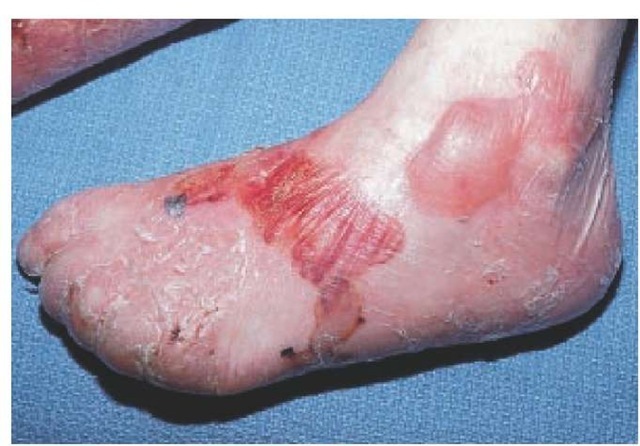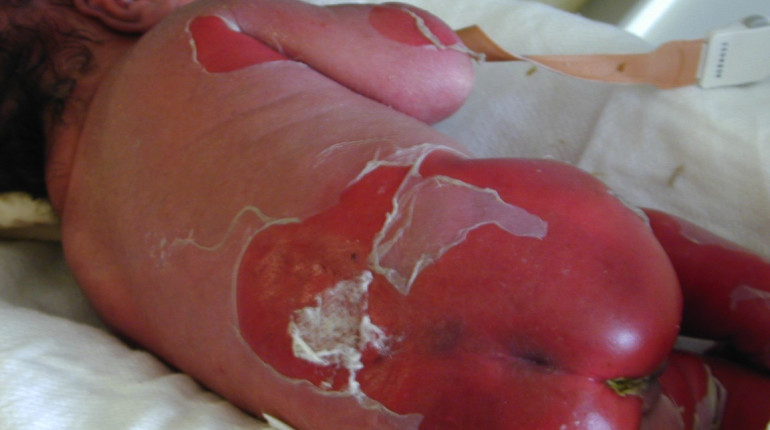Epidermolysis bullosa simplex is a rare inherited skin disorder which causes blistering. Blisters and areas of skin loss (erosions) occur in response to minor injury or friction, such as rubbing or scratching. Blistering primarily affects the hands and feet in mild cases, and the blisters usually heal without leaving scars. Severe cases of this condition involve widespread blistering that can lead to infections, dehydration, and other medical problems. Severe cases may be life-threatening in infancy.
What causes epidermolysis bullosa simplex to occur? 




This type of condition occurs when the gene that helps produce a fibrous protein, known as keratin, is in the top layer of skin is faulty. The condition causes blistering in the epidermis. The blisters usually don’t result in scars with this mild type.
How can this condition be inherited?
If you have epidermolysis bullosa simplex, it’s likely that you will inherit a single copy of the defective gene from one of your parents (autosomal dominant inheritance pattern). If one parent has the single faulty gene, each of his or her offspring has a 50 percent chance of having the defect.
EB simplex affects men and women equally. It is not an infection, it is not contagious and it is not due to an allergy.
With all these, can epidermolysis bullosa simplex be cured?
In the past 20 years, there has been exciting and rapid progress in the understanding of EB simplex, but at the moment there is no cure. Several laboratories around the world are exploring strategies that they hope will lead to an effective treatment but still there’s none.
- Avoid rubbing your child’s skin. You may have to change the way you lift your child.
- Keep your child as cool as possible in warm weather.
- Avoid clothes that fit tightly or rub against the skin to avoid blistering. Wearing clothes made from natural fabrics, such as cotton, will also help your child keep cool.
- Choose comfortable shoes that fit well and don’t have lumpy seams inside.
- It’s usually recommended that new blisters are punctured (lanced) using a sterile needle. Your GP will be able to provide you with a supply of sterile needles. Lancing the blisters will prevent them getting bigger. Large blisters can leave large, painful wounds which take longer to heal.
- Painkillers may be prescribed for pain relief.
Image Credits: what-when-how, medscape, escholarship.org
